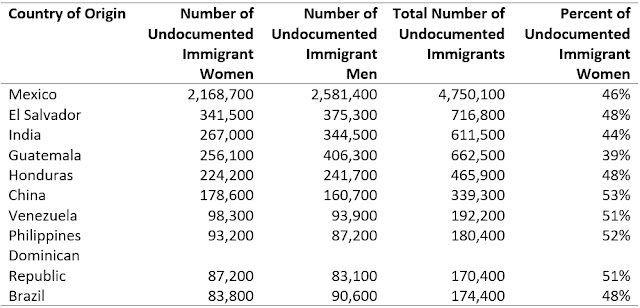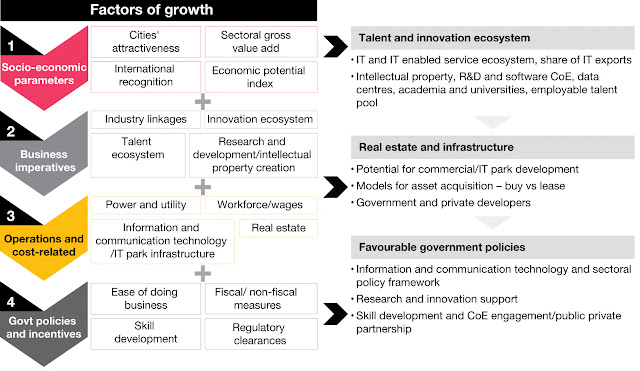#568
Introduction
The U.S. southern border has become the entry point for waves of migrants, not just from Latin America but increasingly from Asian countries like China and India. A staggering 21 million undocumented migrants are currently residing in the U.S., not counting "Dreamers," children born in the U.S. to undocumented immigrants. For a country with a population of around 320 million, this trend is unsustainable both politically and socially, challenging America’s capacity to accommodate a continually growing migrant population.
The Chinese Exodus: "Climbers" and Economic Desperation
China’s economy, once the envy of the developing world, has taken a downturn that is hard to ignore. With youth unemployment officially near 20% (unofficially estimated to be higher) and wage stagnation in major urban centres, prospects are bleak for young Chinese looking for upward mobility. This is fuelling a phenomenon of "Climbers" – Chinese nationals attempting to enter the U.S. illegally by navigating perilous routes through Latin America. Many have lost their lives in the process. Many more have fallen victim to Human Trafficking gangs that operate in the most dangerous/ inhospitable terrain.
Illegal migrants climbing wall in to USA!!!To put this into perspective, U.S. Border Patrol statistics report an almost tenfold increase in the apprehensions of Chinese nationals over the past five years. According to The Economist’s podcast, Drum Tower, China’s "economic miracle" is collapsing for ordinary citizens, with many seeing illegal migration as their last hope for economic opportunity. The fact that they’re willing to risk their lives highlights a profound disillusionment with the Chinese state’s promises of prosperity and stability.
India’s Parallel Story: Prosperity with Caveats
In India, the story is equally contradictory. India has been hailed as an emerging economic superpower, with a projected growth rate of 6.5% for 2024. Yet, this growth is unevenly distributed, benefiting urban elites and large corporations more than the rural and semi-urban populations. States like Gujarat and Punjab, often associated with wealth and progress, paradoxically account for a large share of undocumented migrants. According to Indian government sources, an estimated 2 million Indians attempted to migrate illegally in the last decade, with the majority targeting the U.S. and Canada.
Data from U.S. immigration authorities shows that apprehensions of Indian nationals at the southern border rose by over 80% from 2021 to 2023. This increase underscores a desperate search for opportunities abroad that India’s job market has yet to offer to its growing youth population.
Some of terrain enroute are most dangerous.
Latin American Migration: A Trickling Trend in Comparison
While migration from Latin American countries continues, it’s no longer the dominant force at the U.S. border. In recent years, Asian migration has become a significant factor, particularly as South and East Asian economies grapple with structural inequalities and limited opportunities for the middle and lower classes. Data from U.S. Customs and Border Protection (CBP) highlights that while Central American migration is consistent, the volume of migrants from Asia has seen an exponential rise. In fact, the proportion of Asian migrants apprehended has nearly tripled since 2015, a stark contrast to the perceived image of Latin America as the primary source of U.S. immigration challenges.
America’s Breaking Point: Migration and Electoral Pressure
The influx of migrants, particularly those undocumented, is becoming a pivotal election issue in the U.S., with the public increasingly vocal about the economic and social strain caused by high levels of immigration. The 21 million undocumented residents already present represent nearly 7% of the U.S. population. Considering that many require social support and face language or skill barriers, this growth is straining local systems, from healthcare to education and housing.
Public opinion on undocumented immigration is also shifting, with recent surveys indicating that over 60% of Americans feel that current immigration levels are unsustainable. Many voters see this as a security risk, as many lllegal migrants indulge on rampant crime, rape, murder etc. and the Biden Administration looking at the other way for vote bank politics, and discussions on immigration reform are intensifying in the lead-up to the elections. (Is this similar to few border states in India which welcomes votebank from border!? ) Candidates may find it challenging to balance compassion for migrants with calls for stricter border controls, knowing that their stance could determine election outcomes.
Addressing the Root Causes: Reality Versus the Superpower Illusion
The issue of illegal migration goes beyond border policies; it calls for a deeper look at why people are leaving these "rising superpowers." Both China and India are wrapped in the rhetoric of economic might, yet the reality on the ground speaks otherwise. For lasting change, these nations must address the income inequalities, unemployment rates, and social immobility that continue to push their citizens to leave. Otherwise, illegal migration will persist, putting a strain not only on the U.S. but also on their own credibility as emerging global powers.
Conclusion: The Superpower Paradox
In conclusion, the issue of illegal immigration is part of a broader "superpower paradox." As China and India project global ambitions, their citizens are fleeing in unprecedented numbers, revealing a glaring disconnect between state narratives and lived realities. Until these nations address the internal challenges that drive migration, the allure of the American Dream will persist—sometimes at any cost.
Karthik
30th October 2024
9am.





























.jpeg)






